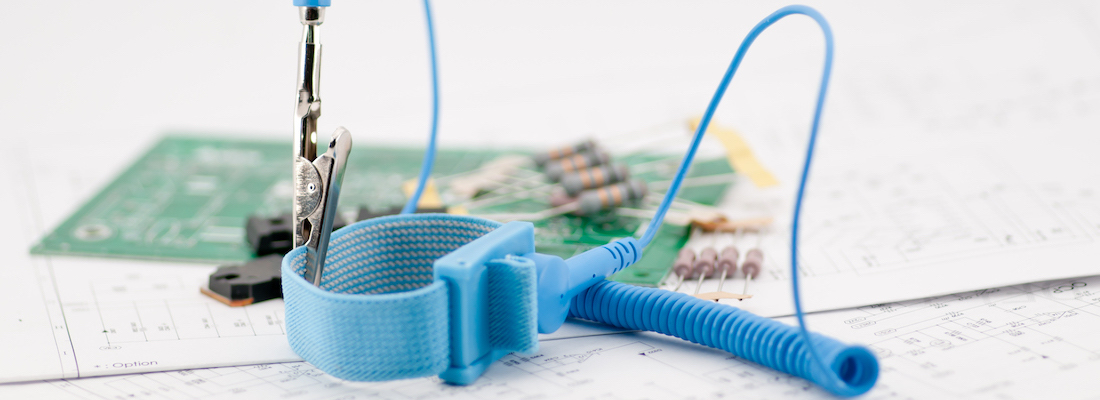What is Electrostatic Discharge?

Electrostatic discharge (also known as ESD) is a sudden burst of electricity created between two electrically charged components. ESD is caused by either static electricity or electrostatic induction, and occurs either when oppositely charged objects come together or experience a dielectric break. While ESD can create sparks, it often takes place without visual or audible signs, which can ultimately ruin electronic systems and mechanics. Let’s dig deeper into electrostatic discharge damage to components, and how to reduce electrostatic discharge.
Is Electrostatic Discharge Harmful?
Electrostatic discharge can be very harmful, creating damage to many electrical components. Because electrostatic discharge damage to components can be invisible, it may not be immediately apparent that an electrical surge has occurred, impacting the reliability and performance of the unit in question. Depending on the voltage, ESD damage can cause:
- Electronic device failures
- Magnetic media erasure
- Fires or explosions near flammable materials
Microchips and other computer hardware are particularly sensitive to ESD due to their fragile nature, and require special protection during manufacturing and use.
Electrostatic Discharge Test
An electrostatic discharge test evaluates how products will react in the event of ESD. Using a specialized ESD gun, a trained individual can perform an electrostatic discharge test by introducing a range of voltage (anywhere from 16-30 kV) into the electrical system to see whether or not the product is immune to discharges. ESD guns are programmable and can be used to detect different kinds of electrical discharges, including from:
- The human body
- Machines
- Charged devices
- And more
Learning ahead of time whether or not products can withstand these types of shocks is a good method for how to reduce electrostatic discharge.
How to Reduce Electrostatic Discharge
When handling these kinds of electrical components, grounding is crucial. Technicians can choose to wear specific items to minimize static electricity such as an ESD wrist strap or conductive shoes, in addition to using anti-static bags to store components. But there are also several ways to ground oneself without the use of specific products. To help prevent ESD damage, you can:
- Discharge your personal static charge by grounding yourself to your computer case first, touching the outside before you jump into internal projects.
- Ensure all electrical components are on a common ground.
- Work in an environment with humidity under 40%.
Work Smart and Avoid Electrostatic Discharge Damage to Components
Gateway Cable Company wants to help your electrical project go off without a hitch, and our extensive inventory of connectors, plugs, and cable accessories can help you work safely and prevent future issues. Our experienced team can guide you through a variety of technical projects, whether you’re looking to test a thermistor, terminate a coax cable, and more. Contact us for a custom quote on the electrical supplies you need.
